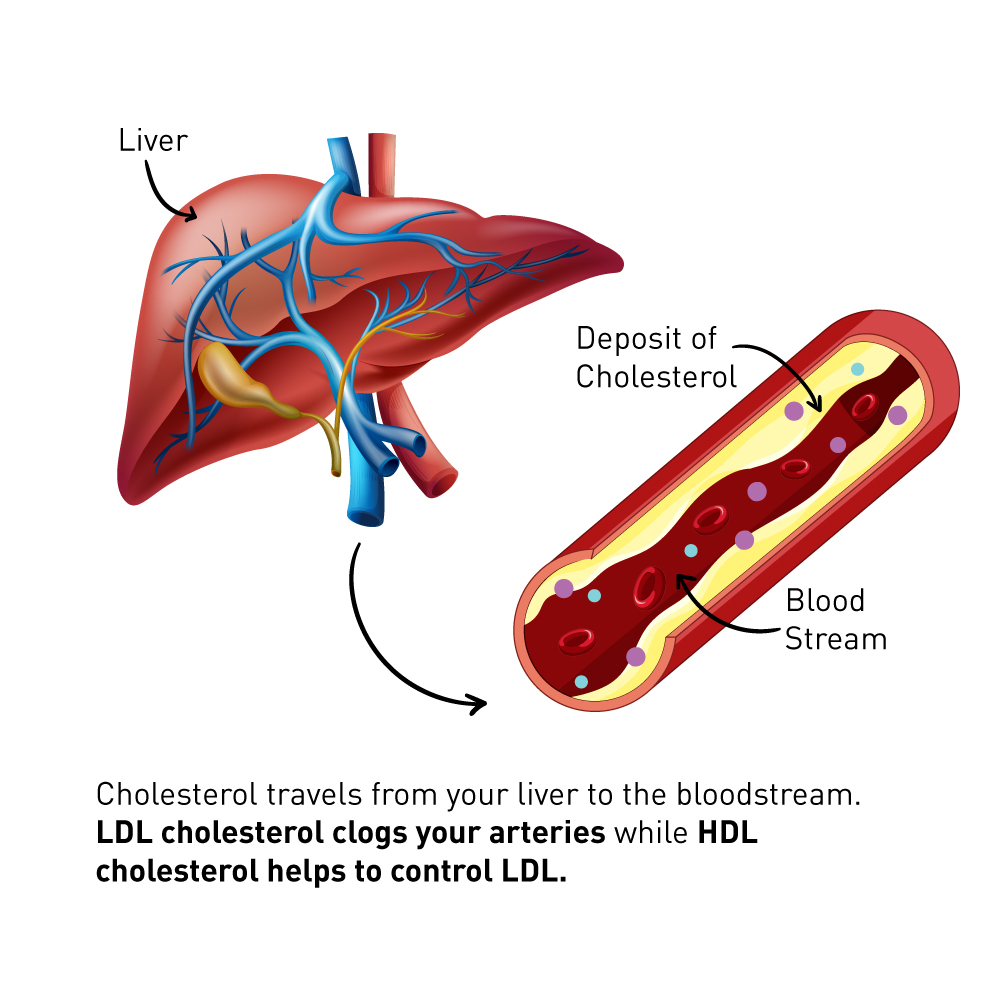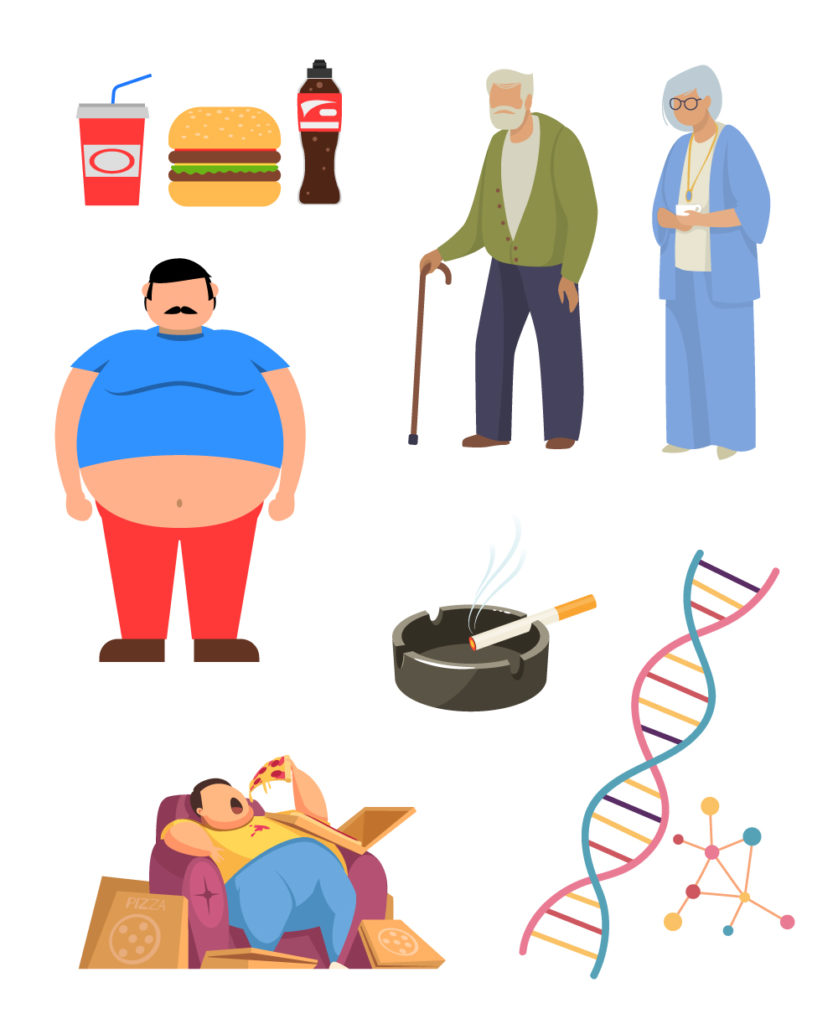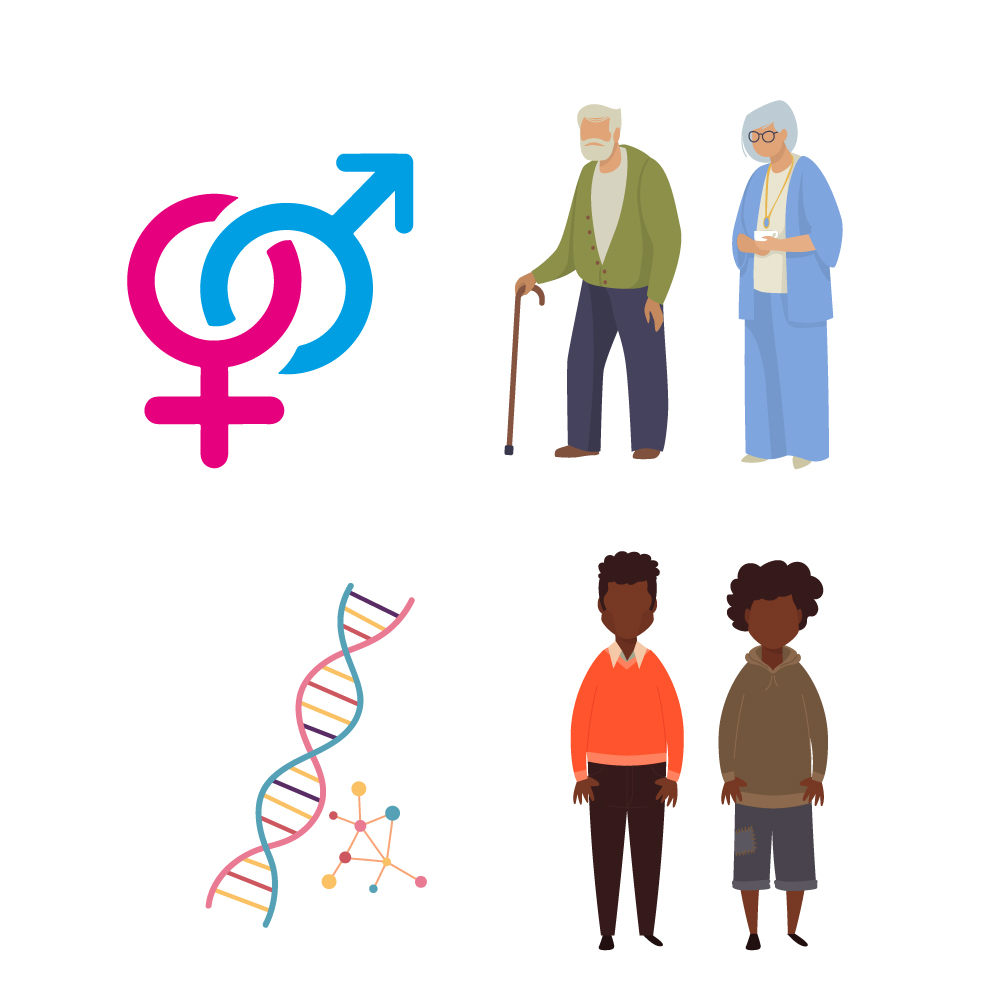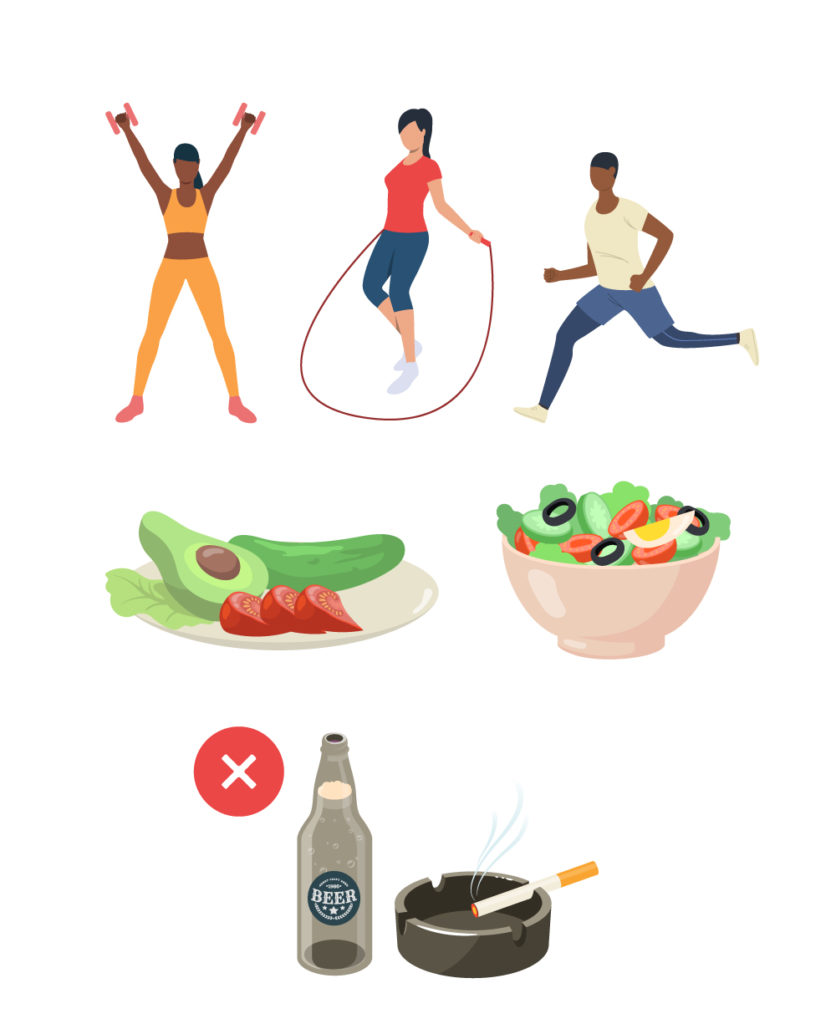
Let’s talk flu, its prevention and home remedies.
Boo-ger season is here! Let’s begin by defining flu (short term for influenza) because it’s usually misunderstood as fever or cold. Flu is a common
Cholesterol is the misunderstood, problem child of wellness and good health. It gets a bad rap, but no one really tells you why it’s there, what it does, or why it isn’t just all bad. In this week’s blog, we break down the what’s what of cholesterol so you will have a greater appreciation of its benefits and why it’s important to keep tabs on its status.
What is cholesterol?
Cholesterol is a waxy, fat-like substance found in all the cells of your body. It’s not inherently bad; it has an important function: your body needs it to build cells and make vitamins and hormones. Your liver produces about three-quarters of the cholesterol in your body, and the rest comes from animal foods such as egg yolks, meat, and cheese. However, too much cholesterol can cause problems.
Cholesterol travels through your bloodstream on proteins called “lipoproteins.” There are 2 types of lipoproteins:
LDL makes up most of your body’s cholesterol. It’s a larger molecule, so high levels of LDL mean there can eventually be a build-up within the walls of your blood vessels, causing narrowing of the passageways and inhibiting the free flow of oxygen-rich blood. Further, there are possibilities for clots to form and get stuck in a narrowed space, which could lead to a heart attack or stroke.
HDL is the good guy: helping clean up the mess! It travels through your blood, picks up excess cholesterol, and takes it back to your liver, where it is broken down and removed from your body. HDL helps you lower your risk of heart disease and stroke.

The HDL cholesterol is closely related to triglycerides, a type of fat found in your blood that is stored in your fat cells and later released by your hormones for energy between meals. However, suppose you regularly consume more calories than you burn, especially from high-carbohydrate foods, it may result in high levels of triglycerides, which increases the risk of strokes, heart attacks and heart disease.
Usually, those with high triglycerides have a propensity to have low HDL cholesterol levels. The triglyceride/HDL ratio should be below 2 (divide your triglyceride levels by your HDL). If the triglyceride/HDL level is above 4, it is considered a risk, and therefore it is advisable to have a lower ratio by changing diet and taking up exercise.
Increased triglycerides can be a reliable sign of biliary function, fat metabolism, liver function, and genetic factors. Problems with sugar typically accompany elevated triglycerides (sweet tooth) or adult-onset diabetes. Therefore, maintaining a triglyceride level between 70 and 100 mg/dl is advisable.
Reduced triglycerides indicate inadequate fatty acid release, hormonal hyperactivity, and perhaps immunological issues.As opposed to simply high cholesterol and LDL/HDL ratios, keep in mind that the triglyceride to HDL ratio is a significantly better predictor of heart disease. It’s crucial to realise that additional factors besides high cholesterol also point to possible issues.

Risk levels | Desirable level | |
Men | Less than 40 mg/dL (1.0 mmol/L) | 60 mg/dL (1.6 mmol/L) or above |
Women | Less than 50 mg/dL (1.3 mmol/L) | 60 mg/dL (1.6 mmol/L) or above |
Cholesterol levels are measured in milligrams (mg) of cholesterol per deciliter (dL) of blood or millimoles (mmol) per liter (L).
Things outside of your control can also affect cholesterol levels.
Age and Sex – The older you get, your cholesterol levels rise. Before menopause, women have lower total cholesterol levels than men of the same age. After the age of menopause, women’s LDL levels begin to rise.
Heredity – Your genes partly determine how much cholesterol your body makes. High blood cholesterol can be genetic.
Race – Certain races may have an increased risk of high blood cholesterol. For instance, African Americans typically have higher HDL and LDL cholesterol levels than whites.

Many things influence your cholesterol levels, which you have control over.
Physical activity – Though genes and weight may play an important role, your lifestyle choices around diet and exercise also influences your overall numbers.
Eat healthily – Add more fibre (whole grains) to your diet and include healthy fats like olive oil, Avacado and certain nuts.
Limit your alcohol intake – Drinking too much alcohol can raise levels of triglyceride fats in the bloodstream and lead to conditions such as high blood pressure and atrial fibrillation.
Consider quitting smoking – Smoking decreases HDL cholesterol.
Check your cholesterol levels – Knowing your cholesterol status can help you control your health.
Men between 45 to 65 and women between 55 to 65 should check for cholesterol every 1 to 2 years.

oLabs provides a hassle-free process for checking your calendar and booking mobile lab tests via the oDoc app according to your flexibility.
However, if you wish to discuss more or gain advice on maintaining your cholesterol levels, speak to a general practitioner via the oDoc app from the comfort of your home.

Boo-ger season is here! Let’s begin by defining flu (short term for influenza) because it’s usually misunderstood as fever or cold. Flu is a common

Menopause Brain Fog is real: A Simple Guide with Symptoms and Treatment Women in their 40s and 50s who are just entering the end of

How to Keep Work Stress from Taking Over Your Life In today’s fast-paced and competitive world, work stress has become an all-too-common problem that affects
Get the latest health tips delivered straight to your inbox!